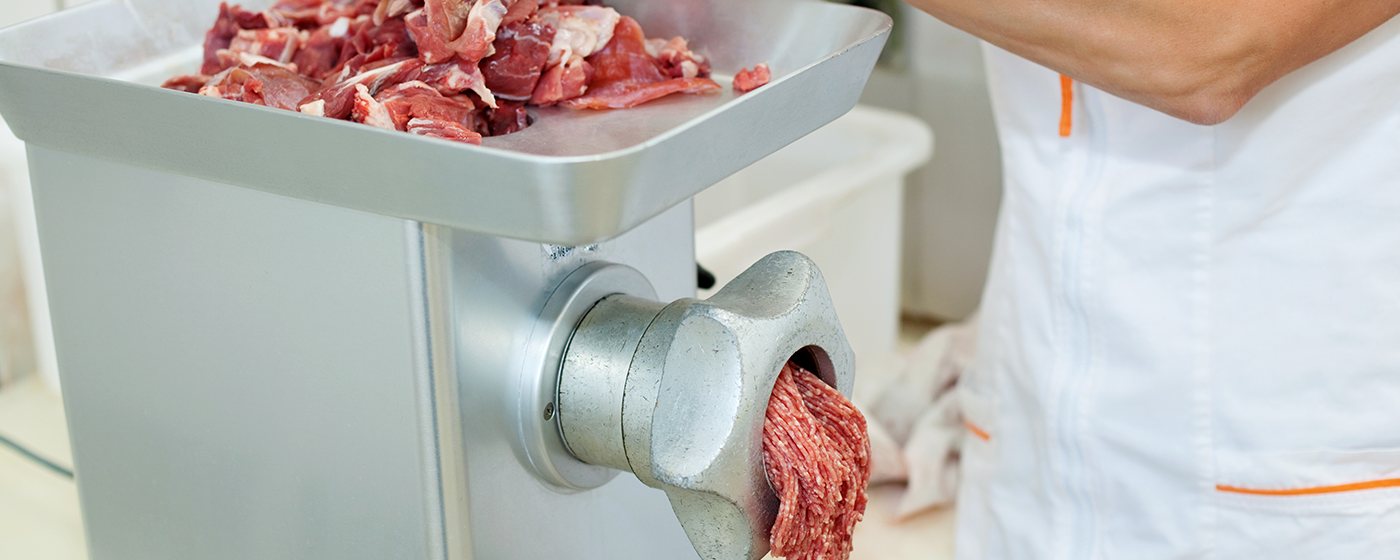Sausages
Sausages are a meat product and have been around for a very long time. They were already popular in Rome and well known in the Middle Ages. Nowadays, the basic ingredients are meat, fat, binding agents and water. These ingredients are contained in a natural or artificial casing. Sausages can be eaten raw, cooked, fermented, dried or smoked, and exist in a huge variety.
Animal intestines used as a casing
Sausages are meat products consisting of a casing filled with seasoned minced meat. They have been in existence for thousands of years.
Sausages were already consumed in the 8th century BCE as we learn from the Odyssey by the Greek poet Homer: “Goats’ bellies are on the fire for the meal, full of blood and fat”. The Romans used to stuff animal intestines or stomachs with sausage meat and described how to prepare them. Today, the butcher’s art lies in producing a finished product which enhances second grade ingredients, such as pieces of meat which are too tough or too small, or even unfit for direct consumption, such as blood.
A high quality product with second grade ingredients
The main ingredients of a sausage are meat, fat, binding agents and water. There are three stages involved in preparing them: mincing the meat and fat, mixing the different ingredients together and filling.
Filing is where the mixture is put into the casing. Natural casings are the intestines of pigs, cows or lambs, and artificial casings can be synthetic or cellulose-based.
The fat is incorporated into the meat during mincing and mixing. To ensure consistency, the food-processing industry often uses milk or soya protein powder extract and eggs as binding agents. Alginates, a substance extracted from seaweed, are also excellent binding agents. Water plays a key role as a gelling agent in sausages. It is generally added during the mixing stage, in the form of ice.
Alongside the main ingredients, there are curing salts, such as sodium chloride or sodium nitrate, which play the same role as in other cured products. Sugar is also a common ingredient, incorporated in the form of sucrose or glucose.
Herbs and spices are key ingredients used as flavouring agents.
Fermented sausages are generally produced by introducing microorganisms in the form of lactic acid bacteria which trigger fermentation.
Four main ingredients and a hundred or so varieties
A wide range of varieties can be obtained by varying the different ingredients used to produce sausages.
Throughout the world, there are four types of sausages: raw sausages such as merguez and chipolatas, cooked sausages which can also be smoked like Vienna sausages, cooked salami, neither dried nor fermented such as Lyon sausage, and dry salami salted, fermented, dried and possibly smoked.
Dry salami is eaten raw and made from main ingredients with added salt, sugar, spices and fermenting agents. Moulds which develop on the casing surface can bring about a second fermentation.
Black pudding is a blood-based sausage. It is a fragile product which must be eaten quickly and is part of the meal celebrating the slaughtering of the pig. White sausages are made from milk, eggs, white meat and fatty bacon.
D’AMICO, Serge, 1997. L’encyclopédie des aliments. Paris : Édition Fontaine.
MYHRVOLD, Nathan, YOUNG, Chris, BILET, Maxime, 2011. Modernist cuisine, Arts et science culinaires. Cologne : Éditions Taschen.










